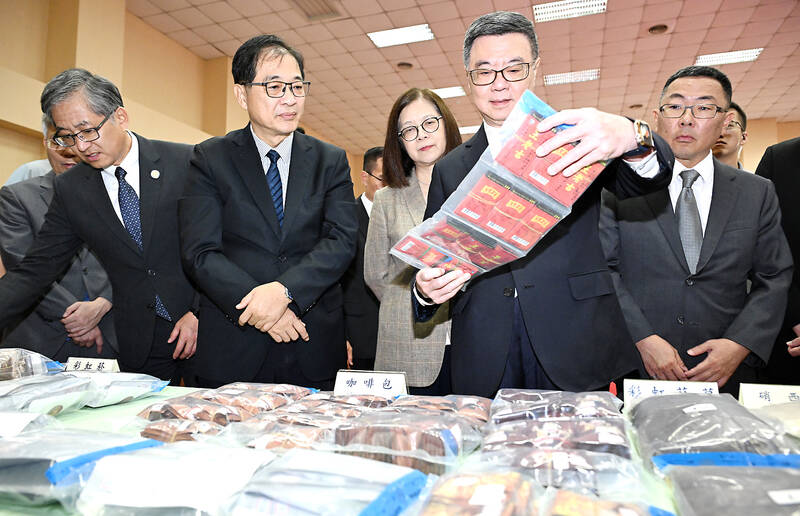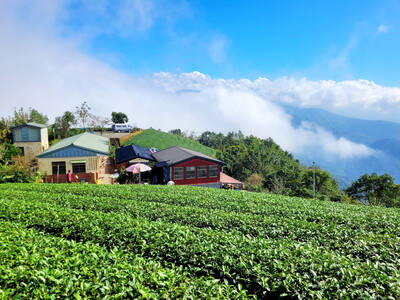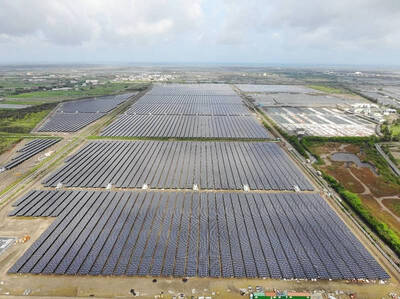In political writing on Taiwan it is frequently noted that three of the first four democratically elected presidents previously served as mayor of Taipei City. That made sense prior to the city-county mergers that began in 2010, as the mayor of Taipei was also the mayor of the biggest city and the nation’s capital and would naturally get the most press attention. It is still a good jump off point to run for the presidency, but it is worth noting that in the last election the former mayor of Taipei came in last, the mayor of Taiwan’s now most populous city New Taipei City came in second and the winner was a former mayor of Tainan.
A statistic that no one notices is that all five of Taiwan’s democratically elected presidents served as cabinet ministers, known officially as the Executive Yuan. Looked at individually, the new cabinet members are mostly good, well-qualified choices, and in my previous column we looked at a few of them. When looked at in aggregate three problems appear with this new cabinet, all of which have important implications for the future and one of which threatens to tear apart the Democratic Progressive Party (DPP). We’ll examine two in this column, and tackle the third in another column this week.
NEARLY A RETIREMENT HOME

Photo: Liao Chen-huei, Taipei Times
This cabinet is the oldest of any cabinet, at least in recent history. According to a Taipei Times op-ed by DPP lawmaker Chiu Chiu-wei (邱志偉) published on May 5, the “DPP needs younger Cabinet picks,” the average age of the cabinet members picked up to the point that piece was written was 62.5. The few ministers appointed after that piece was written were older, so the average is likely even higher.
Of course being older means more perspective and experience, which are assets to any cabinet and will likely make the transition easier. However, this advanced age reduces the pool of future leaders and DPP candidates. Ideally, Lai’s cabinet would have been more balanced between older, experienced ministers and younger, up-and-coming ministers to get the best of both worlds.
For example, former president Tsai Ing-wen (蔡英文) was 44 when she first became a cabinet minister as the head of the Mainland Affairs Council under then-president Chen Shui-bian (陳水扁), giving her valuable experience and plenty of time to develop her career. Former president Ma Ying-jeou (馬英九) had even more time as he was only 38 when he became Minister of Research, Development and Evaluation and Lee Tung-hui (李登輝) was 39 when he joined the cabinet as a minister without portfolio. Current President William Lai (賴清德) himself was 58, younger than the 62.5 current average, when he joined the cabinet, but he joined right at the top as premier, also known formally as the President of the Executive Yuan.
As legislator Chiu points out, the average age of the cabinet in the Chen Shui-bian administration under former premiers Tang Fei (唐飛) and Frank Hsieh (謝長廷) was 55 and 49 respectively when they were appointed. Heading the first DPP-led administration in history, Chen must have been acutely aware of the need to cultivate experience and talent in the party at ages young enough to have a long enough runway to be future leaders.
Not only is the DPP shortchanging the country of future leaders, it is depriving their own party as well. In the last election the DPP hemorrhaged support among younger voters as many switched to supporting the Taiwan People’s Party (TPP).
The most proactive party in working to cultivate young talent is the Chinese Nationalist Party (KMT). The KMT struggles to get youth support because their “one China principle” and other stances on sovereignty and identity are deeply unpopular.
However, KMT party Chair Eric Chu (朱立倫), overturning a century of hierarchical party tradition, has been going all out to promote what young talent the party can attract. For example, in party primaries for positions such as city or county councilor, Chu put in a formula that heavily favored younger candidates.
Of course, this drew complaints from older candidates, but it was an astute move by Chu. He knew that the only way the party would have any hope of picking up younger voters going forward was to have leaders who could appeal to them. Plus, when he took over the party’s politicians were mostly pretty long in the tooth and were soon for the retirement home.
The DPP has talked a lot about winning back younger voters and building the next generation of leaders, but in practice the party has not been anywhere near as proactive as the KMT has been.
ALL THE OLD DUDES
The cabinet is not only old, it is also mostly male. Only about roughly a quarter of the picks were women, which the DPP tried to pitch as an advancement for gender equality, which compared to Tsai’s cabinets which were under 20 percent, it is. However, voters have indicated that this is still too low.
In the 2022 local elections, 10 of 22 — or 45 percent — city and county heads elected were women, and if Kinmen and Matsu are excluded women made up more than 40 percent of the city and county councilors elected. Even more striking is that in those local elections, women candidates won roughly two-thirds of the time, compared to male candidates who won on average only half the time. In the last two national elections, women won over 40 percent of the legislature and re-elected a woman to the presidency in landslide victories.
In other words, the voters are making it loud and clear that they want a significant number of the people representing them to be women, and trends suggest in a few election cycles approximate parity will be reached. Lai’s unrepresentative cabinet is very out of sync on this and shows he has not been listening to how the public wants to be represented. This, combined with the age issue, is not only shoring up problems for the future, but also his own party by depriving it of future female candidates, who are becoming increasingly in demand by voters.
Once again, KMT Chair Chu is listening to voters while DPP William Lai is not. On this issue the KMT has outclassed the DPP in the last few election cycles and leaned in heavily on promoting female candidates, especially in the 2022 city and county races where they won in a landslide led by 10 female city and county head candidates out of a total of 22, whereas the DPP only ran five. This helped the KMT hold the crucial “battleground states” (yes, Taiwanese use this translated directly from English, 搖擺州) in Central Taiwan of Taichung, Changhua, Nantou, Yunlin and Chiayi City.
POLITICALLY PUZZLING
It is puzzling that William Lai does not appear to have considered any of these issues whereas Chu has. Lai is the most successful politician in the country having won every public election he has ever stood in since the 1990s, though he did lose an internal DPP primary to Tsai in 2019. That level of success does not come without some significant political savvy, which makes it even more odd. Perhaps never having felt the sting of defeat may have failed to learn some key lessons, which Chu definitely has.
There is another possibility, and that is internal DPP power dynamics. I have been doing a very time-consuming deep dive into which cabinet members and key executive branch figures belong to which factions or cliques in the party. The picture it paints is of a significant power grab within the party by a faction in a way that no faction could or was allowed to do in the past, and it comes with significant risks for the DPP both internally and externally.
Courtney Donovan Smith (石東文) is a regular columnist for Taipei Times, the central Taiwan correspondent at ICRT FM100 Radio News, co-publisher Compass Magazine, co-founder Taiwan Report (report.tw) and former chair of the Taichung American Chamber of Commerce. Follow him on X: @donovan_smith.

Every now and then, it’s nice to just point somewhere on a map and head out with no plan. In Taiwan, where convenience reigns, food options are plentiful and people are generally friendly and helpful, this type of trip is that much easier to pull off. One day last November, a spur-of-the-moment day hike in the hills of Chiayi County turned into a surprisingly memorable experience that impressed on me once again how fortunate we all are to call this island home. The scenery I walked through that day — a mix of forest and farms reaching up into the clouds

With one week left until election day, the drama is high in the race for the Chinese Nationalist Party (KMT) chair. The race is still potentially wide open between the three frontrunners. The most accurate poll is done by Apollo Survey & Research Co (艾普羅民調公司), which was conducted a week and a half ago with two-thirds of the respondents party members, who are the only ones eligible to vote. For details on the candidates, check the Oct. 4 edition of this column, “A look at the KMT chair candidates” on page 12. The popular frontrunner was 56-year-old Cheng Li-wun (鄭麗文)

“How China Threatens to Force Taiwan Into a Total Blackout” screamed a Wall Street Journal (WSJ) headline last week, yet another of the endless clickbait examples of the energy threat via blockade that doesn’t exist. Since the headline is recycled, I will recycle the rebuttal: once industrial power demand collapses (there’s a blockade so trade is gone, remember?) “a handful of shops and factories could run for months on coal and renewables, as Ko Yun-ling (柯昀伶) and Chao Chia-wei (趙家緯) pointed out in a piece at Taiwan Insight earlier this year.” Sadly, the existence of these facts will not stop the

Oct. 13 to Oct. 19 When ordered to resign from her teaching position in June 1928 due to her husband’s anti-colonial activities, Lin Shih-hao (林氏好) refused to back down. The next day, she still showed up at Tainan Second Preschool, where she was warned that she would be fired if she didn’t comply. Lin continued to ignore the orders and was eventually let go without severance — even losing her pay for that month. Rather than despairing, she found a non-government job and even joined her husband Lu Ping-ting’s (盧丙丁) non-violent resistance and labor rights movements. When the government’s 1931 crackdown